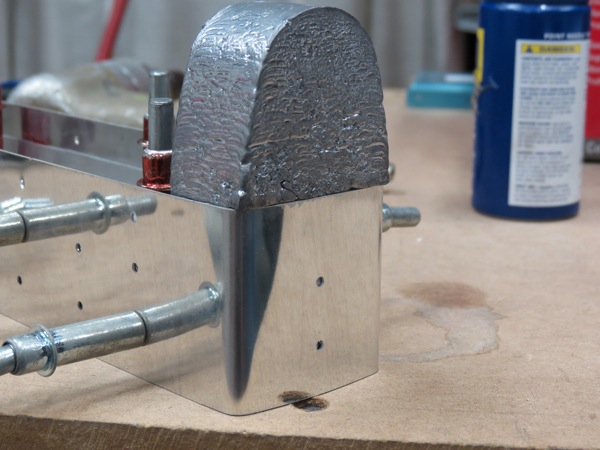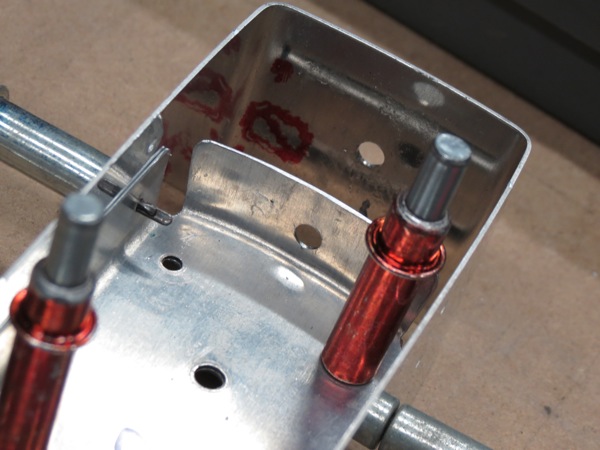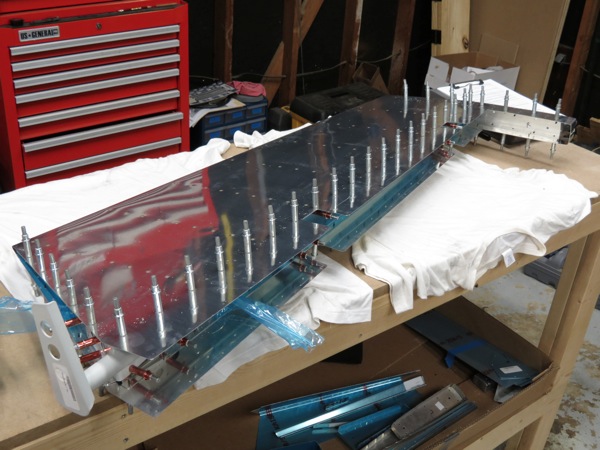Started off the day with some flight time. I’d originally reserved the plane intending to run over to the Spitfire Restaurant for lunch with Josie. Then I got an email which reminded me that this was the first Saturday, which meant it was EAA 690 pancake breakfast day! Even better, the breakfast program sounded interesting; a talk from the LZU tower manager. Luckily, no one had reserved the plane for the morning, so I just edited the reservation to start earlier. So we flew from PDK to LZU, ate pancakes, heard lots of interesting stuff about ATC, then flew over to WDR for lunch before heading back home.
After a brief rest back home, I strolled out to the garage to start priming. This didn’t exactly get off to a great start…when I picked up the ribs, I immediately could see a discolored spot where the part sticker had been on one of the tip ribs. Checked with my finger…it’s sticky. Still got sticker residue on there. I found the same thing on the other tip rib. Apparently I was slacking when I was cleaning these parts…so I went to work on them again with Simple Green and a green pad and got the rest of the residue off. But now I had to get them dry, and I didn’t want to wait another day to prime. So I got creative. First I used the blow gun on the compressor to blast as much loose water off as possible. Then, I went inside and…um…used Josie’s hair dryer to finish drying the ribs. Yes, really.
So then it was back to priming. I was sort of pleased that I’d gotten past this little hiccup and moved on with the day…until I started shooting primer on the spar. Immediately it was obvious that there were some oil spots or something on it, because the primer simply would not stick. I actually watch primer migrate off these spots just after spraying. Again…apparently my cleaning technique is getting really sloppy. So I repeated my past performance, scrubbing the spar again thoroughly before blasting it with the air gun and the hair dryer.
Then, yet another problem cropped up. I could tell that the can of primer I was using was getting low…and oh look, it seems to be the last can. So I got to make a quick run out for a primer restock.
While I’m talking about primers…I think I’m going to try something new on some scrap pieces while I’m waiting for the wings to come in. I haven’t been all that pleased with the Duplicolor stuff, despite some endorsements on VAF. At first I thought maybe it was my technique, but I feel like I’m doing OK now, but quality is still so-so. NAPA 7220 is another commonly recommended primer, so I think I’ll pick up a can and shoot some on some of my scrap pieces. If I like the results, I’ll probably switch to that once I get going on the wings.
Anyway, despite some setbacks, I still got the skeleton parts primed today. I still need to deburr and dimple the rest of the skin, but that should go fast, so I think tomorrow I can get going riveting the elevator. Then I get to have more fun in the wonderful world of leading edge rolling…
Sorry, no pictures today.








